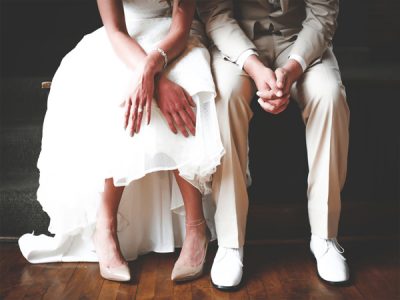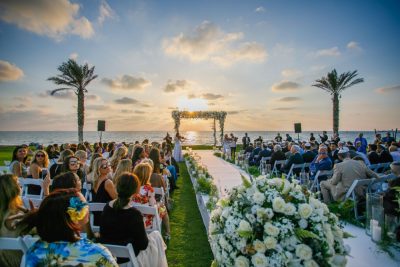Whether you are planning a Jewish wedding ceremony, or about to attend a Jewish wedding, here is a brief guide of the rituals you might see or want to include in your ceremony. Some of these may be familiar rituals that you have seen before, and now you will also know the meaning and beauty behind them. The Jewish marriage ceremony brings together the legal and spiritual, the happy and holy, the modern and ancient wisdoms, as the two souls merge in to one complete soul.
KETUBA
This is a Jewish version of a marriage agreement written in Aramaic text, mentioning the grooms responsibilities and the brides protected rights. This document is usually signed by the couple, two witnesses and is read out loud to all the guests as part of the wedding ceremony.
KISE KALA
During the reception, just before the ceremony, the bride can choose to sit on her throne and greet her guests. She is said to have a special spiritual access to the divine on her wedding day, and so she blesses her friends and family, and may be asked to pray for specific and personal requests. The brides who include this as part of their ceremony, usually do the veiling on the throne instead of at the chuppah aisle.
BEDEKEN
In other words, the veiling ritual. This is when the groom see’s his bride and then veils her himself. Biblically, this became a custom after Jacob was tricked in to marrying the wrong sister as she was veiled and he didn’t look to see the woman behind the veil. Spiritually, this veiling ceremony signifies the appreciation of inner beauty and modesty. In doing this, the groom acknowledges to love his future wife for her obvious characteristics, as well as honouring the more hidden sides as they reveal themselves.
CHUPPAH
This is a canopy structure under which the couple makes their vows. It is built with four corners and a covered roof symbolizing the vision of a new home they are about to start to build together. It is also open on all sides to remind us of the biblical story of Abraham and Sarah, who welcomed people with unconditional hospitality. Most modern chuppah’s are built to free-stand, though traditionally, each pole is held by a close relative and symbolizes their support of the couples new life, home and relationship. It is a custom to have the chuppah outside under the stars to be witnessed by the holy forces and spirits.
CIRCLES
Once under the chuppah, the bride walks around the groom, circling him seven times, biblically symbolizing the seven days of creation. The number seven reflects a wholeness that can only be attained as a couple. In modern ceremonies, the bride and groom may both opt to do this. This ritual symbolizes a wall of love and a wall of protection from temptation and evil spirits.
KIDDUSHIN
The blessing over the wine, which represents joy in Jewish tradition. The glass of wine is filled until just overflowed, to represent abundance and overflowing happiness. Both the groom and then the bride will sip from the cup to receive the blessings as one.
RING
The marriage becomes official when the groom gives the bride something of value. In Jewish weddings this is usually a plain gold wedding band to represent the beauty in simplicity. A ring is in a shape of a circle, which represents an everlasting journey together.
BLESSINGS
The Sheva Brachot , translated as the seven blessings, can be read in Hebrew and English, by the officiator or by family members/close friends. The ‘brachot’ come from ancient scriptures and blesses the marriage with peace, joy and companionship.
SMASHING THE GLASS
The ceremony ends with a final ritual where the groom breaks a glass cup by smashing it with his right foot. Biblically, this represents the destruction of the Temple in Jerusalem. Spiritually, it signifies the reality of a marriage having both happy and hard times, and a mutual commitment to be there for one another in such times. Modern ceremonies may opt to have both the bride and groom break something. Some couples take the broken glass and make it into something they can use or see on a daily basis such as earings, a pendant, an ornament.
YIHUD
In other words, ‘seclusion’. After the ceremony, the couple is accompanied by the guests in song and dance to their seclusion room, where they spend their first moments alone together as husband and wife. Orthodoxly, they encourage a minimum of eighteen minutes where the couple can reflect and rejoice in private after their sacred union ceremony.
Happy Planning!
Written by Natalie – The head dreamer & schemer
*Want more tips like this? Don’t forget to subscribe in the footer below!




